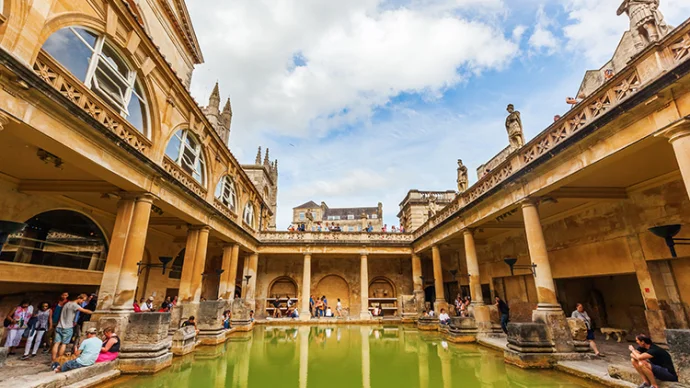
About Imperial Baths of Trier
The Imperial Baths of Trier, known in German as ‘Kaiserthermen’, are the beautifully preserved ruins of a Roman public bath complex constructed in the fourth century AD.
Considered to be the largest Roman baths outside of Rome, the remains of the Imperial Baths of Trier are centrally located within the city and are a fantastic site, with many of its walls standing and even the option to explore the underground tunnels.
This impressive ancient site is featured as one of our top ten visitor attractions in Germany.
History of Imperial Baths of Trier
Trier was a Roman city known as ‘Augusta Treverorum’ which was established in around 15 BC. By the late third century AD, when Diocletian divided the Empire and created the Tetrachy, Trier was such a flourishing and important city that it was known as the ‘Second Rome’. At this time, Constantius Chlorus became the emperor of the West Roman Empire and moved to Trier with his son, Constantine the Great.
From 306 onwards, Constantine began developing a major building programme for an Imperial palace district, of which the Imperial Baths of Tier were a part.
These Kaiserthermen were planned as a gift from the emperor to the population of Trier. Construction came to a halt in the 3rd century AD, and were then recommenced in the 4th century CE. At this time there were plans to use the building as a barracks, possible for the mounted Imperial guard.
During later centuries, the Kaiserthermen were converted and variously used as a castle, a city wall, and monastery. In the 19th century, excavation works started on the Imperial Baths’ remains, and in 1984, several windows in the apse were reconstructed.
Imperial Baths of Trier Today
Today, the Imperial Baths of Trier still form a part of Trier’s city centre. The building being so close to the palace assembly hall further demonstrates how large the former palace district once was. They are also a minute from the amphitheatre.
Visitors can walk around the baths and learn about how they were used and their historical context from a number of experienced guides.
Today, the baths are designated as part of the Roman Monuments, Cathedral of St. Peter and Church of Our Lady in Trier UNESCO World Heritage Site. They are also undergoing tests with the aim of determining whether the decorative and technical fittings of the spa were ever completed.
Getting to Imperial Baths of Trier
From the centre of Trier, the baths are a 5 minute walk via Kaiserstraße. They’re also a 6 minute drive via Weberbach and Weimarer Allee.
Featured In

Constantine the Great Sites
Follow in the footsteps of Constantine the Great from the Hagia Sophia to the Church of the Holy Sepulchre and more, includes an interactive map of Emperor Constantine I locations.

Roman Baths in Europe
Immerse yourself in the history of the Roman Empire at these remarkable ancient ruins of bathhouses and hypocausts across Europe.

Roman Sites in Germany
The Romans left behind a number of fascinating sites such as amphitheatres, baths, villas, and burial grounds after being evicted from 'Germania'. Here's our pick of 10 of the most fascinating Roman ruins in Germany.




















